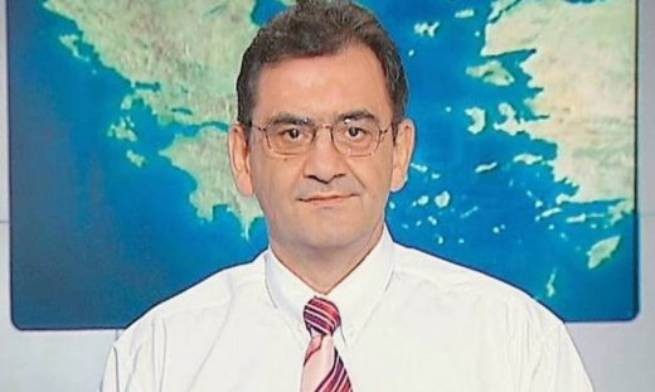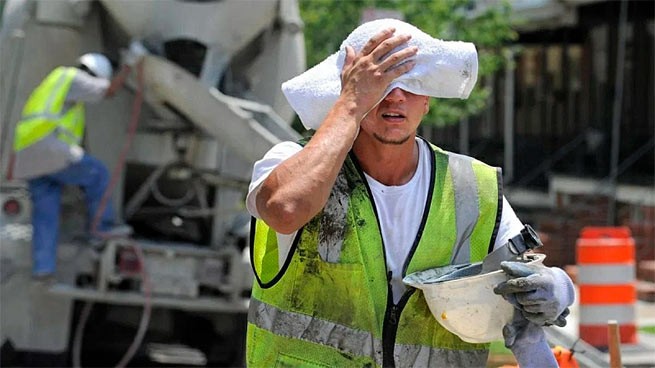Emergency measures for private and public sector employees due to with abnormal heat, established throughout the country.
The Ministry of Labor and Social Security announced emergency protection measures in the private sector due to abnormal heat.
In particular, on Wednesday, July 12, 2023, Ministerial Decree No. 65581 was issued, which lists all emergency measures to protect private sector workers from the heat wave, dubbed “Cleon”.
Among the measures included in the ministerial decision:
- Mandatory cessation of work in areas where the risk of heat stress becomes extremely high between 12:00 and 17:00
- provision of home-based work for high-risk private sector workers
- measures to organize working time and facilitate the arrival and departure of workers
- technical and organizational measures to prevent heat stress for workers
- specific provisions for outdoor work and the provision of personal protective equipment.
Details of a circular issued by the Department of Labor
Following the National Weather Service’s (EMY) Severely Dangerous Weather Bulletin (EDECF), which announced “a heat wave from Wednesday 07/12/2023 to early next week,” the Department of Labor issued a circular. This heatwave has been designated CLEON and is classified as a severe weather event lasting at least six days, with the hottest days on Friday (14-07-2023) and Saturday (15-07-2023).”
The Ministry of Labor and Social Protection, in order to comply with labor protection rules, strongly recommends that employers take the necessary technical and organizational measures in accordance with applicable law, as well as reduce employment and / or stop working during peak temperature hours (12.00-17.00), if considered necessary to avoid heat stress phenomena under heat wave conditions.
Taking into account the relevant circular of the General Secretariat for Labor Relations of the Ministry of Labor and Social Security of May 26, 2023 (No. 52903), the following:
- Organizational measures to prevent heat stress
- Organization of working hours by setting breaks of appropriate duration to reduce the heat stress of workers.
- Scheduling work associated with a high thermal load on workers, if possible, for a time outside peak temperatures.
- Reduction of employment or cessation of work in areas with high thermal load, such as machinery, foundries, glass, ceramic factories, shipyards, etc., from 12.00 to 17.00.
- Provision of canteens or other suitable spaces for breaks. Depending on the objective needs and possibilities, these rooms should be equipped with an air conditioning system. Premises are selected after the employer’s consultation with a safety specialist, an occupational health doctor, members of the EHS, and where they do not exist, with employee representatives.
- Providing cool drinking water with a temperature of 10-15°C.
Special provisions for outdoor work
Measures that can be taken to manage heat stress in workers include:
- Provision and use of suitable headgear, if not provided for the use of hard hats, as well as skin protection.
- Where appropriate, the use of protective clothing and headgear is not required.
Provision/selection of a shaded area or construction of suitable shelters for work, if possible.
Scheduling work so that the heaviest work (such as asphalt paving) is done during periods of the coldest temperatures.
Reduction of employment and / or termination of work in the period from 12.00 to 17.00.
Provision of cool drinking water (10-15 °C).
For workers belonging to high-risk groups, and especially in cases of exposure to stressful conditions, the possibility of home work is recommended if the nature of the work allows this (Table 1).
The Labor Inspectorate will activate targeted inspections at workplaces in accordance with the attached circular no. 267075 /30.05.2023,
- outdoor work (for example, construction, road and other technical work),
- work in indoor areas, where, due to the nature of production processes, an additional heat load from high temperature and humidity indicators and radiant heat may occur (for example, in foundry, metallurgy, plastics production, etc.), and manual labor (for example, transportation heavy objects, building materials).
Finally, employers are encouraged to check the site regularly. EMYwhich contains a 48-hour forecast of the relevant bioclimatic predictive index (WBGT) of worker heat stress, which should be seriously considered when planning work and / or technical and organizational measures to prevent worker heat stress.
Similarly, a real-time WBGT (WBGT) and forecast for the next 48 hours is provided by a smart mobile application. “WBGT – Heat Stress Index”which receives meteorological data from the nearest weather station
In the event of a complaint, the public can contact the complaint telephone 1555 or to the local labor protection inspectorate.

The Athens News editors also recommend the publication of: Beware the heat! How to deal with it: tips and tricks







More Stories
Thodoris Kolidas explains the phenomenon "black sky" on Good Friday
Black swan in the Evros river delta
The weather will turn bad on Good Friday